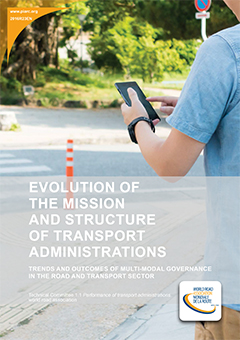Evolution of the mission and structure of transport administrations

In the 2012 - 2015 WRA Cycle, Working Group 1 has focused on investigating the evolution of missions and structures of road administrations in the context of multi-modal planning and delivery. Included within this scope are various methods of planning integration and informal and formal collaboration between mode-specific delivery agencies, as well as the shift seen in some countries towards the development of new integrated transport agencies with responsibilities, powers and resources across all transport modes and networks.
The Working Group's programme has been based on a review of literature, a Questionnaire survey of WRA member agencies and in-depth Case Studies. From these approaches, a Conceptual Model and associated Toolkit for Multi-Modal Planning and Delivery has been developed. This is further supported by advice on the process, issues and practicalities associated with structural reform for those organisations and stakeholders considering going beyond collaborative models for the achievement of multi-modal outcomes.
A key conclusion is that significant benefits can be achieved through common multi-modal (and sub-sector) transport objectives and policies, shared strategies and plans, data exchange and joint working between different agencies. These approaches can and should be considered before more extensive proposals for structural merger or integration of separate organisations are put forward. However, under the right circumstances, and with well-planned and executed reform, multi-modal transport agencies with the full set of planning, delivery, operational and customer-facing tools and resources can achieve substantial benefits of strategic leadership and decision-making, meeting of customer expectations, effective scheme prioritisation and delivery, as well as organisational and programme efficiency savings.
Detailed governance arrangements, implementation practicalities and success factors behind different models are highly place and context specific; there is no evidence which points towards a single set of institutional arrangements being universally applicable or accepted. On this basis, it is for each locality to largely decide its own course of action and organisational form based on the challenges faced, legal and cultural framework, appetite and ambition for change and the specific enablers and constraints on reform posed by stakeholders and the political process.
Building on these considerations, a series of conclusions, applicable to mode-specific and to multi-modal organisations, has been drafted for how roads planning and delivery should be taken forward in a wider, more complex and rapidly evolving set of policy, customer expectations and public value challenges. Some areas for further investigation in the next WRA Cycle for 2016 - 2020 are also suggested.
Information sheet
- Date: 2016
- Domain(s): Governance of Road Authorities
- Type: 2016R23EN - Technical Report
- PIARC Ref.: 2016R23EN
- ISBN: 978-2-84060-415-0
- Number of pages: 73